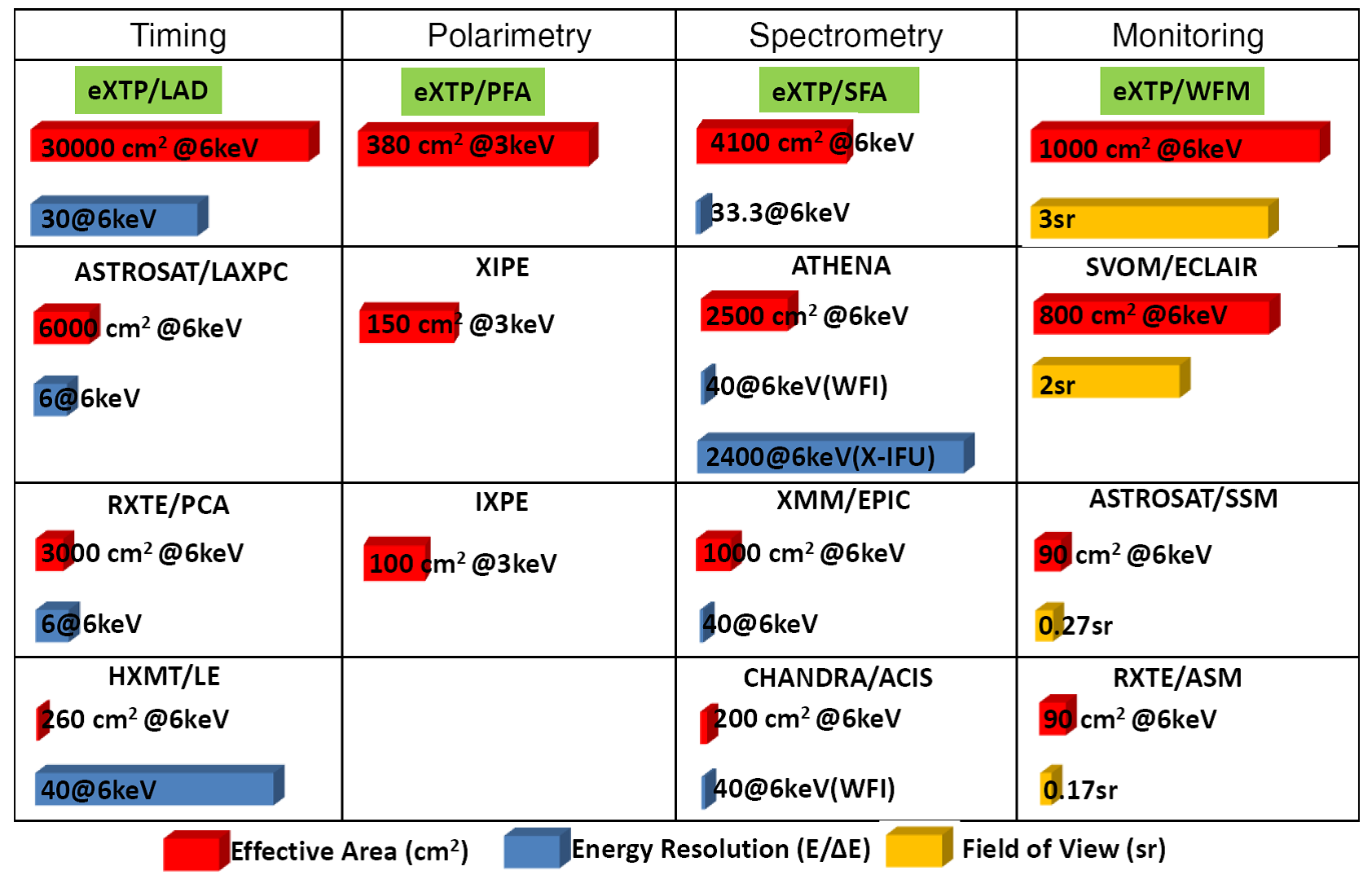The Next Generation Large Space Observatory eXTP Kicks off
The Chinese Academy of Sciences (CAS) announced that the Strategic Priority Space Science Program (Phase II) has officially kicked off on July 4 at National Space Science Center (NSSC).
The enhanced X-ray Timing and Polarimetry mission (eXTP), which is the next-generation X-ray observatory of China for studying black holes and neutron stars in unprecedented details, is included as a high priority and large space science mission. The program will be fully funded through China’s 13th five-year plan and aimed for launch in around 2025.
Scientific goals
The enhanced X-ray Timing and Polarimetry (eXTP) space mission is a flagship space astronomy mission developed by a Sino-European scientific consortium, led by the Institute of High Energy Physics (IHEP), Chinese Academy of Sciences (CAS). Its fundamental physics goals include the study of: the equation of state of baryonic matter at extreme densities expected only in the cores of neutron stars; the properties of space-time under extreme gravity (in the vicinity of neutron stars and black holes); the behavior of light in ultra-strong magnetic fields, a billion of times stronger than those achievable in labs, as observed in magnetars.

Illustration of eXTP (Image by CAST)
eXTP will be also a powerful X-ray observatory and a key element of the multi-messenger approach to the Universe, detecting electro-magnetic counterparts of gravitational wave sources.
Payload and Satellite
Its unique state-of-the-art payload includes the Spectroscopic Focusing Array (SFA), the Large Area Detector (LAD), the Polarimetry Focusing Array (PFA), the Wide Field Monitor (WFM). This enables unprecedented simultaneous spectral-timing-polarimetry studies of cosmic sources in the energy range from 0.5-30 keV (and beyond). China is responsible for providing SFA and PFA, and Europe is expected to provide LAD and WFM.
The total weight of the satellite is about 4500 kg, to be launched by the Long-March 7 rocket from Wenchang into a circular orbit of about 550 km above the equator of the earth. Ground stations of China and other countries will be used to receive the large amount of data. The “short message” function of China’s Beidou system will also be used to distribute alerts found by eXTP’s very sensitive WFM. eXTP is expected to lead the field for more than 8-10 years.

eXTP specifications compared with other X-ray observatories: longer bars indicate higher performance. (Image by CAST)
eXTP Consortium
The eXTP international consortium includes major institutions of CAS and Chinese Universities, and from several European countries, among which Italy, Germany, Spain, France, Switzerland, Denmark, Czech Republic, Poland, the Netherlands and more. Other international partners participate in eXTP: overall, more than 200 scientists in more than 100 institutions from about 20 countries. In May 2018, CAS and the Italian Space Agency (ASI) have reached an agreement that ASI will play a leadership role in coordinating the European payload contribution to eXTP. ESA will also be invited to participate through a Mission of Opportunity after the ongoing extended Phase A study funded by CAS.
eXTP History and Plan
The XTP mission concept, initially proposed in 2007, was studied as one of the “background” missions in the CAS Strategic Priority Space Science Program between 2011 and 2016. The European participation significantly enhanced the science potential of XTP, which then evolved to eXTP. The eXTP mission is now approved as a high priority and flagship-class space science mission in China to be launched around 2025; full implementations will be carried out in the next several years following the established procedure and funding cycles in China. eXTP may also be included in the International Major Science Program, recently initiated by the Chinese Government.
eXTP Current Status:
eXTP has recently been selected for an extended Phase A study and fully funded for Phase B and part of Phase C through 2020 in China, with a total budget around 470 million RMB from CAS Strategic Priority Space Science Program in China’s 13th Five-Year Plan period. CAS has formally invited all ESA member states involved in eXTP to join the extended Phase A study. The remaining about 3/4 budget for eXTP in China will be allocated in China’s 14th Five-Year Plan period starting from 2021
Schedule of eXTP
- Before the end of 2018: Completion of the China-Europe joint Phase A+ study of eXTP
- 2019.1-2019.12: Phase B development
- 2020.1-2020.12:Phase C1 development (end of 13th Five-Year Plan)
- 2021.1-2022.6:Phase C2 development (start of 14th Five-Year Plan)
- 2022.7-2024.12:Phase D development
- In the mid of 2025:launch and in-orbit operation
- 2025-2035:Scientific observation
eXTP white papers to be published in “Science in China”:
Accretion in Strong Field Gravity
Physics and Astrophysics of Strong Magnetic Field Systems with eXTP
Dense Matter with eXTP
Observatory Science with eXTP
The enhanced X-ray Timing and Polarimetry mission- eXTP
For further information please contact:
Dr. Hongwei Liu (liuhw@ihep.ac.cn), eXTP coordinator for international cooperation, IHEP, CAS
Dr. Marco Feroci (marco.feroci@iaps.inaf.it), eXTP European coordinator
Prof. Andrea Santangelo (andrea.santangelo@uni-tuebingen.de), eXTP international coordinator
Prof. Shuang-Nan Zhang (zhangsn@ihep.ac.cn), eXTP principal investigator
Mr. Guo Lijun (ljguo@ihep.ac.cn), manager, Directors’ Office, IHEP
Contact Information
Mr. Guo Lijun
ljguo@ihep.ac.cn